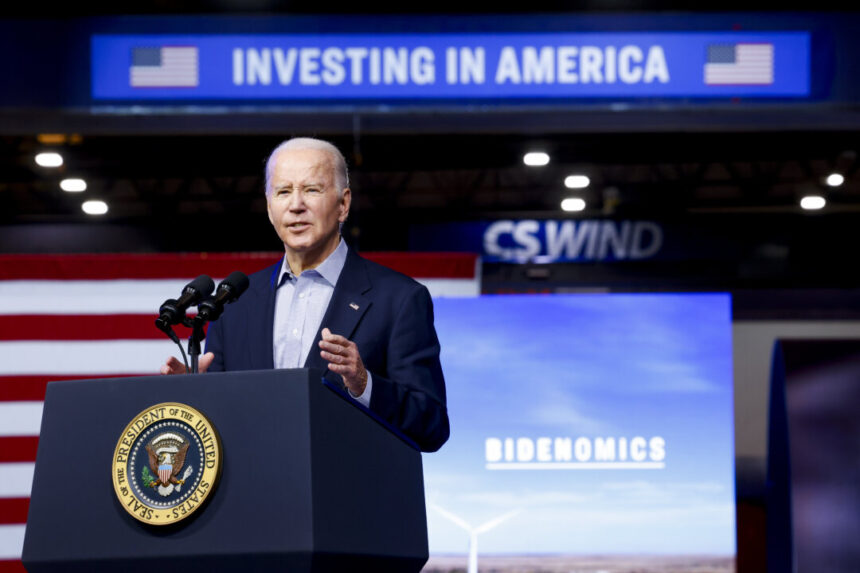Commentary
Last week was a tough one for President Joe Biden and the American people. Inflation remains high, and job opportunities are dwindling.
The U.S. Bureau of Labor Statistics (BLS) reported a 3.5 percent increase in prices between March 2023 and March 2024. This number is well above the Federal Reserve’s target of 2 percent inflation and comes after three years of consistent price hikes.
Despite the Federal Reserve’s efforts to combat inflation by raising interest rates to the highest level in 23 years, inflation continues to rise.
The Biden administration’s substantial deficits are offsetting the Fed’s attempts to reduce inflation by withdrawing liquidity from the economy. While the Fed aims to slow down the economy to curb inflation, the Biden administration continues to inject borrowed funds into the system.
This conflicting approach between the Fed and the Biden administration leads to a larger government presence and a smaller private sector. Additionally, as the largest debtor globally, the federal government faces even greater deficits with high interest rates.
The long-term effects of Bidenomics on inflation are significant. Since President Joe Biden took office, prices have surged. In just three and a half years, the cost of essential items like eggs, gasoline, peanut butter, butter, margarine, electricity, airfare, and used cars has skyrocketed.
Americans are feeling the impact of these price hikes, with a majority rating the economy poorly. Only 38 percent believe the economy is in good shape, compared to 65 percent during the Trump administration.
As noted by the Wall Street Journal:
“If voters have a negative outlook on the economy, persistent inflation is a major factor. Price increases under the Biden administration are unprecedented, especially affecting low-income and younger workers who lack financial security in stocks or housing.”
Mark Halperin suggests that the rising cost of living may play a crucial role in the upcoming election outcome. The burden of high prices is becoming unbearable for many Americans.
However, the challenges do not stop at inflation; employment news is also troubling.
“In the last year, employment among U.S. natives has declined by 651,000, particularly affecting men, a demographic that President Biden struggles to connect with.”
Conversely, employment among foreign-born individuals has increased by 1,266,000, driven by a growing population of foreign-born individuals in the U.S. Since last summer, the disparity between native and foreign-born employment has widened significantly.
Furthermore, the latest jobs report indicates a rise in unemployment among Black or African American individuals, reaching its highest level since January 2022. The unemployment rate in this group has increased over the past year.
The job market poses more challenges for President Biden, as part-time positions are growing faster than full-time jobs. Many Americans are juggling multiple jobs with minimal benefits to cope with the rising costs of living.
In summary, Bidenomics results in higher prices, fewer job opportunities, increased part-time work, and a widespread sense of economic struggle.
Despite attempts by the media to portray a positive image, everyday Americans feel the impact of rising prices and limited job prospects under President Biden.
The hallmark of Bidenomics seems to be the shrinking of products, where consumers pay more for less. If this economic trend continues for the next seven months, Bidenomics could spell trouble for President Biden.
From Gingrich360.com
Views expressed in this article are opinions of the author and do not necessarily reflect the views of The Epoch Times.
Please rewrite this sentence.
Source link







